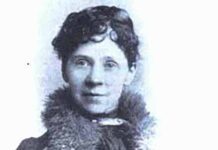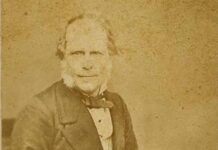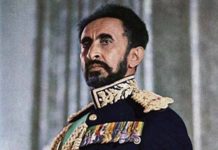In the summer months of 1940, the British were faced with one crisis after another, culminating in the Battle of Britain which they had to win to survive.
After nearly six weeks of unremitting crisis, the strain on Prime Minister Winston Churchill was beginning to show. When he broadcast on radio on the evening of June 18, 1940, the day after beleaguered France asked the invading Germans for an armistice,Winston sounded tired. His voice was rough and some of the defiant punch had gone out of it.
Luftwaffe Air Raids
That same night, the war took a frightening new turn when 120 Luftwaffe bombers raided eastern England. Nine people were killed. Winston spent the following weekend at Chequers, the Prime Minister’s official country residence in Buckinghamshire. The atmosphere at Chequers was grim.
On June 20, 1940 Winston had told a secret session of the House of Commons that plans for prosecuting the war in 1941 and 1942 had been laid, but there was no guarantee that Britain would remain at liberty long enough to put them into practise. Winston’s mood swung between his “black dog” depressions and bouts of aggression.
Clementine. Churchill’s Advice
It became clear to Clementine, Winston’s wife, that her husband’s fits of temper were making it difficult for his minsters to work with him and she tried to intervene. “My darling” Clementine began “one of the men in your entourage, a devoted friend, has …told me that there is a danger of your being generally disliked by your colleagues and subordinates because of your rough, sarcastic and overbearing manner.
“My darling Winston, I must confess that I have noticed a deterioration in your manner and you are not so kind as you used to be … I cannot bear that those who serve the country and yourself should not love you as well as admire and respect you….”
Winston valued Clementine’s advice, but had little time to adjust his conduct before he was faced with an agonizing decision. It concerned the French fleet berthed at the naval base of Mers el Kebir, near Oran in Algeria, which was then a colony of the French Empire in Africa.
Assaulting the French fleet
After the Franco-German armistice signed on June 22, these powerful, well-equipped vessels were in danger of falling into German hands.When the French authorities at Oran who were loyal to the collaborationist Vichy government, refused to cooperate with Britain about putting the ships out of reach, Winston ordered the destruction of the fleet.
On the morning of July 3, 1940, the guns of Force H, the Royal Navy squadron in the Mediterranean, blew up one French cruiser, severely damaged another and killed 1,300 French seamen.
Winston. who was an inveterate Francophile, later wrote of this attack on a former ally as “a hateful decision, the most unnatural and painful in which I have ever been concerned.” Subsequently, Winston wept when he had to tell the House of Commons what had been done.
Ruthless British resolve
However, the action at Mers el Kebir had unexpected, though salutary, effects. It removed the still lingering doubts especially in the United States, over Britain’s will to fight and win the war, and gave the British a new name for ruthless resolve. Winston confirmed this new image when he called Mers el Kebir “the turning point in our fortunes. It made the world realize that we were in earnest in our intentions to carry on.”
The next, even more serious, test of Britain’s will to win soon followed. Plans were being laid by the Germans for Operation Sealion, the invasion of the British Isles. In preparation for this assault, the Luftwaffe launched air attacks on Britain in order to destroy the Royal Air Force (RAF) and so establish supremacy in the air.
The Battle of Britain Begins
The Luftwaffe attacks began on August 13, 1940 – Adlertag or Eagle Day. Field Marshal Hermann Goering, head of the German air force, had every expectation of quick success. Aircraft production in Britain had accelerated since the war began, but not sufficiently to confront Goering’s Luftwaffe on equal terms.
But though the RAF had only 650 Hurricane and Spitfire fighters to face the Germans’ 2,800 fighters, this disparity was deceptive. The RAF managed to keep six hundred Spitfires and Hurrricanes in service every day and these planes had the advantage of operating from their home bases.
The equivalent figure for the Luftwaffe’s Messerschmitt BF 109s was eight hundred planes, but their bases in the recently conquered territories of Belgium and France were not yet fully prepared. In addition, the Lufwaffe’s flying time over Britain was restricted to twenty-five minutes by the limited amount of fuel their aircraft could carry if they were to return safely to their bases across the English Channel.
Radar Warning Stations
However, the most crucial advantage the RAF enjoyed was the chain of radar warning stations which could detect incoming raiders at long range. Radar enabled the RAF to concentrate its squadrons and have them waiting in the right place before the Luftwaffe arrived.
August 1940 was hot and sunny. Day after day, the cloudless skies of southern England, scarred by the vapor trails of the contestants, afforded observers a grandstand view of the dogfights taking place overhead. The RAF made full use of the advantage of surprise which radar allowed them.
On August 13, the Luftwaffe flew 1,485 sorties, yet failed to break the back of RAF resistance. German losses were three times greater – 45 aircraft shot down, compared to thirteen RAF planes.
Winston Views the Action
Winston had never lost his boyish sense of excitement at the prospect of history unfolding. News of how the aerial battle was progressing was brought to him at 10 Downing Street, the Prime Minister’s official residence in London, but he wanted to witness the action for himself.
On August 14, 1940, he drove to Stanmore, northwest of London, to monitor the progress of the battle in the operations room of Fighter Command. The next day, he repeated the experience in the operations room of Fighter Command’s II Group at Uxbridge in Middlesex.
Sources:
- Trivett, Hugh: Achtung Spitfire: Luftwaffe Over England Eagle Day 14 August 1940 (Battle of Britain 70 Years on) (Stroud, Gloucestershire, UK:The History Press, , 2010) ISBN-10: 0752457209/ISBN-13: 978-0752457208
- Zimmerman, David: BRITAIN’S SHIELD: Radar and the Defeat of the Luftwaffe (Stroud, Gloucestershire, UK: Amberley Publishing, 2011 ISBN-10: 1445600617/ISBN-13: 978-1445600611








